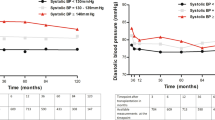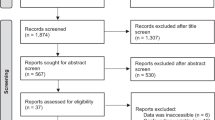Abstract
Post-transplant hypertension remains a significant risk factor for graft loss, but whether or not specific blood pressure (BP) medications affect graft outcome is still unknown. We assessed the interaction between BP control and antihypertensive drugs on graft outcome. We retrospectively examined clinic BP data for 1662 renal transplant (RTx) patients, transplanted between 1994 and 2000 at our centre. The analysis examined all patients who received central α-agonists and peripheral α-antagonists, beta-blockers, calcium channel blockers (CCBs), angiotensin-converting enzyme (ACE) inhibition (ACEI), angiotensin receptor blockers (ARBs). BP recordings during treatment were categorized for each agent. Thus, a particular BP could be categorized for multiple medications. A total of 1462 patients (pts) (88%) were Caucasian and 800 pts (46%) received cadaveric RTx. There were 10.6±6.8 BP measurements for each patient post-RTx. CCBs, alone among the classes of antihypertensive drugs evaluated, reduced the risk for graft loss (RR: 0.736; P=0.035) in the overall analysis. Interestingly, stratifying levels of BP control unmasked a beneficial effect on graft survival of ACEI/ARB therapy in individuals with higher levels of systolic (>152 mmHg) and diastolic blood pressure (>98 mmHg) treated with ACEI/ARBs compared to individuals treated with CCBs (P<0.01 for each). Thus, stabilizing BP is important post-RTx. CCBs are associated with improved rates of graft survival. Their role in a compromised RTx, however, deserves further study. ACEI/ARBs have clear benefits, improving graft survival in individuals with elevated systolic blood pressure and proteinuria. CCBs are not as efficacious in this setting.
This is a preview of subscription content, access via your institution
Access options
Subscribe to this journal
Receive 12 digital issues and online access to articles
$119.00 per year
only $9.92 per issue
Buy this article
- Purchase on Springer Link
- Instant access to full article PDF
Prices may be subject to local taxes which are calculated during checkout


Similar content being viewed by others
References
Hariharan S et al. Improved graft survival after renal transplantation in the United States 1988 to 1996. N Engl J Med 2000; 342: 605–612.
First MR, Neylan JF, Rocher LL, Tejani A . Hypertension after renal transplantation. J Am Soc Nephrol 1994; 4: S30–S36.
van der Schaaf MR et al. Hypertension after renal transplantationCalcium channel or converting enzyme blockade? Hypertension 1995; 25: 77–81.
Opelz G, Wujciak T, Ritz E . Association of chronic kidney graft failure with recipient blood pressure. Collaborative Transplant Study. Kidney Int 1998; 53: 217–222.
Mange KC, Cizman B, Joffe M, Feldman HI . Arterial hypertension renal allograft survival. JAMA 2000; 283: 633–638.
Cosio FG et al. Elevated blood pressure predicts the risk of acute rejection in renal allograft recipients. Kidney Int 2001; 59: 1158–1164.
Raman GV et al. Modifying effects of amlodipine on cyclosporin. A-induced changes in renal function in patients with psoriasis. J Hypertens Suppl 1998; 16: S39–S41.
Lewis EJ, Hunsicker LG, Bain RP, Rohde RD . The effect of angiotensin-converting-enzyme inhibition on diabetic nephropathy. The Collaborative Study Group. N Engl J Med 1993; 329: 1456–1462.
Fleming JT, Parekh N, Steinhausen M . Calcium antagonists preferentially dilate preglomerular vessels of hydronephrotic kidney. Am J Physiol 1987; 253: F1157–F1163.
English J, Evan A, Houghton DC, Bennett WM . Cyclosporine-induced acute renal dysfunction in the rat. Evidence of arteriolar vasoconstriction with preservation of tubular function. Transplantation 1987; 44: 135–141.
Ruggenenti P et al. Calcium channel blockers protect transplant patients from cyclosporine-induced daily renal hypoperfusion. Kidney Int 1993; 43: 706–711.
Becker BN, Jacobson LJ, Hullett DA . An antigen-independent important hormone:intrarenal angiotensin II (AII) as a key to understanding chronic allograft nephropathy. Graft 2002; 5: 199–204.
Stigant CE, Cohen J, Vivera M, Zaltzman JS . ACE inhibitors angiotensin II antagonists in renal transplantation: an analysis of safety efficacy. Am J Kidney Dis 2000; 35: 58–63.
Midtvedt K, Hartmann A . Hypertension after kidney transplantation: are treatment guidelines emerging? Nephrol Dial Transplant 2002; 17: 1166–1169.
Dudley CR . Treatment of posttransplant hypertension: ACE is trumped? Transplantation 2001; 72: 1728–1729.
Acknowledgements
This work was supported in part by a Merck Medical School Grant (BNB), a grant from Novartis (BNB), and by NIH Grants 1RO1-AI49285-03 (BNB) and 1K24 DK616962-02 (BNB).
Author information
Authors and Affiliations
Corresponding author
Rights and permissions
About this article
Cite this article
Premasathian, N., Muehrer, R., Brazy, P. et al. Blood pressure control in kidney transplantation: therapeutic implications. J Hum Hypertens 18, 871–877 (2004). https://doi.org/10.1038/sj.jhh.1001767
Received:
Revised:
Accepted:
Published:
Issue Date:
DOI: https://doi.org/10.1038/sj.jhh.1001767
Keywords
This article is cited by
-
Headache changes after kidney transplant
Acta Neurologica Belgica (2022)
-
Patterns of antihypertensive medication use in kidney transplant recipients
Herz (2017)
-
Management of hypertension and factors affecting its control in Jordanian renal transplant recipients
International Journal of Clinical Pharmacy (2012)
-
Primary Care of the Renal Transplant Patient
Journal of General Internal Medicine (2010)
-
Is RAS blockade routinely indicated in hypertensive kidney transplant patients?
Current Hypertension Reports (2007)



